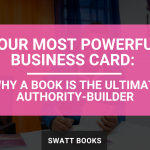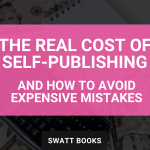Publishing your book can be a daunting and overwhelming task, especially if you’re new to the process. With so many options available and conflicting advice from various sources, it’s crucial to understand the different routes you can take. In this guide to publishing options, we will explore the three main routes to market: Traditional Publishing, Self-Publishing, and Hybrid Publishing. We’ll highlight the pros and cons of each method, helping you decide which path is best for your book, budget, and circumstances.
Traditional Publishing
Let’s start our guide to publishing options with Traditional Publishing. This option involves an established publishing house taking control of the entire process, from vetting and selecting manuscripts to editing, designing, and distributing books. This method has been around for centuries and is seen by many as the gold standard.
Pros:
- Credibility: Traditional publishing often symbolizes achievement and recognition in the literary world. A book published through a traditional house carries a certain prestige that can open doors to literary awards and reviews in prominent publications.
- Professional Support: Authors benefit from the expertise of experienced editors, designers, and marketers. These professionals ensure that the book meets high standards of quality and marketability.
- Wider Distribution Networks: Established relationships with retailers ensure your book is widely available. Traditional publishers have the resources and connections to get your book into major bookstores, both online and offline.
- Prestige & Recognition: Traditional publishing can enhance an author’s credibility, often symbolizing a certain level of achievement and recognition in the literary world. Being published by a traditional house can also lead to invitations for speaking engagements and media appearances.
Cons:
- Less Creative Control: Publishers make all final decisions on design and content. Authors may have to make compromises on their vision to align with the publisher’s goals.
- Longer Timelines: The process can take years from manuscript acceptance to release, which can be frustrating for authors eager to share their work with the world.
- Limited Royalties: Authors typically receive lower royalties as a significant percentage goes to the publisher. The financial rewards can be modest unless the book becomes a bestseller.
- Rights: Authors sign over the rights to their book, losing control over their work. This can limit their ability to repurpose content or explore other publishing opportunities.
Additional Insights:
- Submission Process: The submission process for traditional publishing can be rigorous and competitive. Authors often need to secure a literary agent who can help navigate the industry and improve their chances of getting published.
- Marketing Support: While traditional publishers provide initial marketing support, authors are still expected to actively promote their book. Successful marketing often involves a partnership between the author and the publisher.
- Advances: Traditional publishers may offer an advance against future royalties. While this can provide some financial support upfront, it also means that royalties will only be paid once the advance is earned back.
Self-Publishing
Let’s continue our guide to publishing options with Self-Publishing. This is the option where authors independently publish their books without the assistance of a traditional publishing house. This method empowers authors with complete creative control and ownership.
Pros:
- Complete Creative Control: Authors have the final say on every aspect of their book, from content to cover design. This allows for a true representation of the author’s vision.
- Higher Royalty Earnings: Self-published authors keep 100% of the profit. Platforms like Amazon KDP and IngramSpark enable authors to earn significantly higher royalties per book.
- Faster Time to Market: The timeline from manuscript to published book is considerably shorter, allowing authors to respond quickly to market trends.
- Personal Branding: Self-publishing allows for a more authentic representation of an author’s brand and vision. Authors can align their books closely with their personal or business goals.
- Rights Ownership: Authors retain complete ownership and control over their books, allowing them to repurpose content or sell subsidiary rights as they see fit.
Cons:
- Marketing & Distribution Challenges: Authors handle marketing and distribution themselves. This can be time-consuming and requires a good understanding of book promotion strategies.
- Lack of Professional Support: Authors are responsible for editing, design, and formatting unless they hire professionals. The quality of the final product depends on the skills and resources available to the author.
- Difficulty in Gaining Mainstream Recognition: Self-published books can struggle with credibility and respect. However, with a professional approach and strategic marketing, many self-published authors have achieved significant success.
Additional Insights:
- Professional Services: Investing in professional editing, cover design, and typesetting is crucial for producing a high-quality book. These services can make the difference between a mediocre book and a standout publication.
- Print-On-Demand: Print-on-demand (POD) services allow authors to print books as they are ordered, reducing upfront costs and eliminating the need for inventory storage.
- Author Platform: Building a strong author platform through social media, blogs, and other channels is essential for self-published authors. A robust online presence can significantly boost book sales and visibility.
Hybrid Publishing
And finally, let’s end our guide to publishing options with Hybrid Publishing which attempts to combine elements from both traditional and self-publishing. A publishing house manages the logistics, but the author pays for some or all of the costs and has more involvement in the process.
Pros:
- Control & Collaboration: Authors have more control over their work while benefiting from professional support. This model allows for a more collaborative approach between the author and the publisher.
- Royalty Options: Offers varying royalty options, giving authors flexibility. The author often retains a higher percentage of royalties compared to traditional publishing.
- Customisation: Authors can choose which services they need, paying only for what’s required. This can include editorial support, cover design, and marketing services.
- Speed to Market: The timeline can be faster than traditional publishing, allowing authors to capitalize on current trends and timely topics.
Cons:
- Costs: Can be expensive depending on the services chosen. Authors need to budget for professional services to ensure the quality of the final product.
- Quality Variation: Quality can vary widely depending on the author’s choices and budget. It’s important to thoroughly research and vet hybrid publishers before committing.
- Royalty Share: Royalties are split between the author and the publisher. While the split is often more favorable to the author than in traditional publishing, it still reduces overall earnings.
- Rights: Hybrid publishers often retain some rights, such as ISBN ownership and publishing imprint control. Authors should carefully review contracts to understand the implications.
Additional Insights:
- Reputation and Research: Not all hybrid publishers are created equal. Authors should thoroughly research potential hybrid publishers, looking at their reputation, past projects, and client testimonials.
- Contract Clarity: It’s crucial to understand the terms of the contract, especially regarding rights, royalties, and the scope of services provided. Don’t hesitate to ask questions and seek legal advice if needed.
- Marketing Support: Hybrid publishers may offer marketing and publicity services, but the extent and effectiveness of these services can vary. Authors should be prepared to take an active role in promoting their book.
Making the Decision
Choosing the right publishing option depends on your goals, budget, and desired level of control over your work. Here’s a quick summary of our guide to publishing options to help you decide:
- Traditional Publishing is best if you seek credibility, professional support, and wide distribution but are willing to give up creative control and accept lower royalties.
- Self-Publishing is ideal if you want complete control, higher royalties, and faster publication, but are ready to handle marketing and pay for professional services.
- Hybrid Publishing can be a good middle ground if you want professional support and more control but be prepared to pay higher costs, share royalties, and still give up some rights.
Next Steps
Are you ready to take the next step in your publishing journey? Learn more about the best publishing strategies and how to choose the right path for your book in my upcoming book, “The Write Strategy.” Pre-order your copy now to gain insights and guidance tailored to your needs.
By understanding your options and making informed decisions, you can successfully navigate the publishing landscape and bring your book to life. Whether you choose traditional, self, or hybrid publishing, the right approach can help you achieve your goals and share your message with the world.





